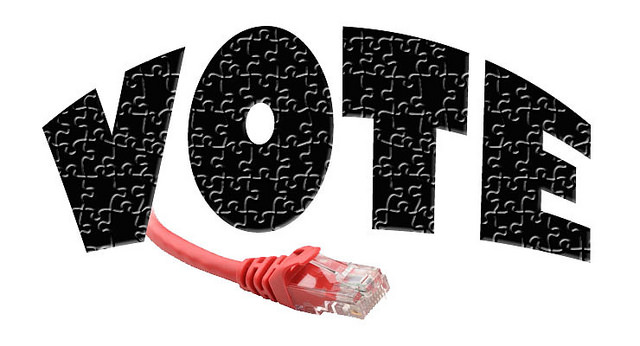Like this article? rabble is reader-supported journalism. Chip in to keep stories like these coming.
Like rocket-packs and hover boards, the ability for a Canadian to vote in a federal election via the Internet continues to be a sci-fi dream.
“With elections it’s unlike any other system in a cyber security system because everyone’s a potential adversary — the voters, the voting vendors, election officials, third parties. So you have to imagine how to protect against all those possibilities,” explains Aleksander Essex, an Assistant Professor of Software Engineering at the University of Western Ontario
“Internet voting has been used at the national level in other countries, but none as big as Canada,” says Nicole Goodman, Research Director, Centre for e-Democracy and Assistant Professor at the Munk School of Global Affairs. She has a list of factors that she says are stopping us from implementing it at the Federal level “from concerns about security and the process of authentication, to the reluctance of government to embrace digital technology to policy and scalability.”
Goodman is also the director for the Internet Voting Project, a research project that looks at the effect of voting online in elections.
The only country that has used iVoting at the national level is Estonia, which has a population three per cent the size of Canada’s.
Every Estonian adult is required to own a valid passport and also an ID card according to Mihkel Solvak, a researcher at the Institute of Government and Politics, at the University of Tartu.
“Every citizen (and legal resident) actually already owns the key ingredient of ivoting, a secure way to identify herself online. Voters tend to ivote quite quickly, the electoral authorities have reported that the whole process takes on average 90 seconds, so most voters cast a vote after identifying themselves in one and a half minutes. The voter can vote an unlimited number of times during the ivoting period with only the last ivote counting. This option is there to ensure that voters who might have been pressured to ivote in a specific way can revote later,” said Solvak.
Solvak cites a Liberal party campaign promise as one of the driving forces for implementing iVoting in Estonia.
“In a nutshell one could say that a mixture of political, technical and social issues happened to coincide that all led to this voting mode being introduced.”
Diane Benson, spokesperson for Elections Canada, says that a pilot project for Internet voting at the federal level was talked about in 2008, but is not being pursued at this time.
“We continue to study internet voting along with other innovative ways to vote but believe there are challenges related to the integrity, verifiability and the secrecy of internet voting,” she said.
“Take every single cyber-security problem that you can think of an internet voting inherits them all,” agrees Essex.
“A classic question I get all the time is — I can bank online, why can’t I vote online? And it comes down to the fact that they are fundamentally different problems. If you’re willing to give up the secret ballot then you can vote online with a fair degree … the problem is that when you want to have something that is absolutely counted correctly on the one hand and absolutely preserving the privacy of voter on the other hand and then have them both at the same time, you get into a massive open technical problem that the entire research community hasn’t solved in a robust way.”
In their 2011 Labour Force Survey, Statistics Canada asked Canadians for the main reason they did not vote in the May 2, 2011 federal election. Twenty-three per cent of respondents said they were too busy, 10.1 per cent said they were out of town and 8.5 per cent reported a disability or illness that precluded them from voting.
Could that 40 per cent of Canadians who did not vote be successful voters if iVoting existed this time around?
According to Goodman, Internet voting may not be the magic bullet we want it to be. “Literature produces mixed results as to whether internet voting impacts voter turnout. In the analysis of the 2010 Ontario municipal election, my research with my colleague Leah Stokes showed a 3.5 per cent increase.”
Solvak on the other hand has high expectations for Estonian voting. He says that after 10 years of iVoting every third vote in Estonia is now cast online and he expects that number to grow.
But even if every eligible voter in Estonia voted via the Internet, it still wouldn’t pose anywhere near the security risk that Canada faces with its 25 million eligible voters.
“It’s like a vacuum cleaner for all types of vulnerabilities and adversaries. It’s the final frontier of cyber security.” Says Essex
Angela Misri is a freelance writer and digital producer. She is the author of Jewel of the Thames and she can be reached at @karmicangel.



